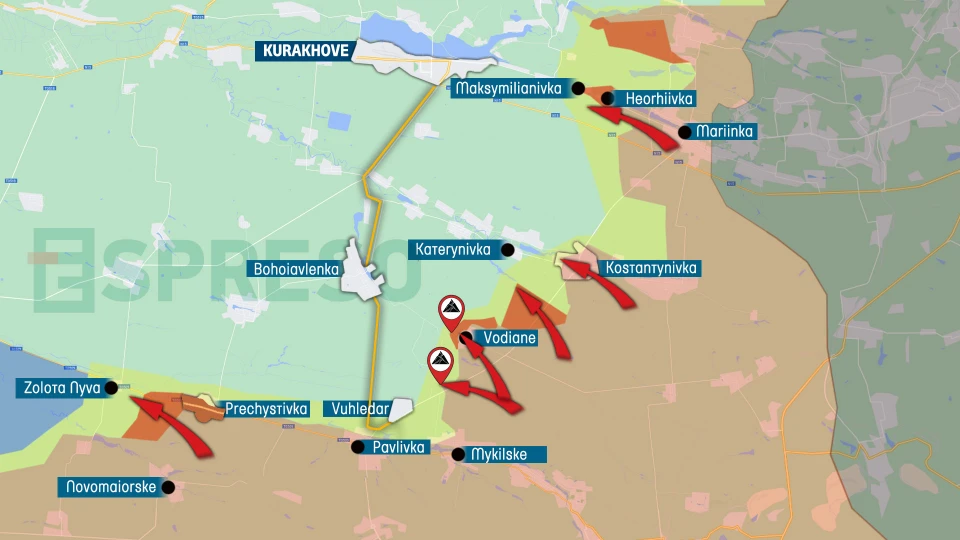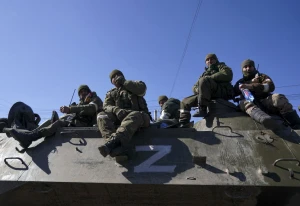
Search for options to end war in Ukraine enters decisive phase. Serhiy Zgurets' column
President Volodymyr Zelenskyy's visit to the United States should play a key role in finding acceptable options for ending the Russian-Ukrainian war
Plan for Ukraine's victory
This week's focus will be on the Ukrainian president's visit to the United States, as Volodymyr Zelenskyy is to present a Victory Plan to the current U.S. President Joe Biden and presidential candidates, which is intended to be a joint plan.
Some foreign publications have already cited the main components of this document, which contains four key points. The first point is a security guarantee for Ukraine from the West. The second is the continuation of hostilities on the territory of Russia, currently in the Kursk region, to ensure a territorial trump card in the negotiations for the future. The third is a request for specific weapons. And the fourth is international financial assistance for Ukraine's war-torn economy.
The victory plan is slated for implementation from October to December of this year, based on previous statements. On September 23, Zelenskyy remarked that the coming months will be crucial in the ongoing war. The President of Ukraine emphasized that time is limited for determining the outcome, asserting that it is up to Ukraine to shape that outcome, rather than allowing Russia and its brutal allies to dictate the terms.
What can we say about this Plan in advance? I will focus only on its military component. Ukraine relies on a strong military component, which should create conditions for launching the negotiation process, forcing Russia to recognize the need to end the war and recognize Russia's inability to achieve political goals on the battlefield. In this regard, the Kursk operation of the Ukrainian Armed Forces, which maintains a certain offensive momentum despite all the difficulties, as well as recent large-scale strikes on Russian missile and artillery depots and arsenals, including Toropets, Tikhoretsk depot, Mariupol, Voronezh region, and Morozovsk. Another component is the Ukrainian leadership's insistence that the Ukrainian Armed Forces be authorized to strike deep into Russian territory. These are all practical parts of this victory plan.
If the strategy in the Kursk region and the destruction of warehouses is intended to rely on Ukraine's own forces, there is a pressing need to inflict maximum damage on critical components of the Russian military machine. Achieving this requires enhanced capabilities that Ukraine is seeking from the United States. These include not only authorizations but potentially new models of weapons beyond the conventional offerings, including ATACMS. This approach aims to ensure the future destruction of a significant portion of Russia's military infrastructure at depths of 300 to 500 kilometers, not just up to 300 kilometers. The targets would encompass not only airfields but also command posts, communication systems, and air defense installations.
These extended ranges are designed to create a situation in which Russian troops involved in operations against Ukraine cannot effectively provide sufficient firepower, command, control, and communications, nor utilize Iskander and other ballistic missiles. Under these conditions, the Ukrainian Armed Forces would be able to conduct their own asymmetric operations in addition to the Kursk operation. This strategy could facilitate the establishment of a blockade of occupied Crimea and create circumstances that significantly weaken Russia's strategic positions in any potential future negotiations.
Ukraine's partners, particularly in the United States, may respond to this plan with varying levels of support based on their own assessments of the situation in Ukraine. Some may argue that Ukraine lacks sufficient human resources to effectively confront Russia, or that Russia could soon amass enough ballistic and cruise missiles to breach Ukraine's air defense systems, potentially leading to a humanitarian catastrophe in the long run. Concerns may also arise about the possibility of Russia resorting to tactical nuclear weapons or provoking other threats, leading to the argument that Ukraine should avoid escalating the military situation. Consequently, they may advocate for implementing a more pragmatic plan to end the war, one that does not necessarily align with restoring borders as they were in 1991.
President Zelenskyy's visit to the United States is poised to play a crucial role in identifying acceptable options for resolving the Russian-Ukrainian war. This process appears to be entering a decisive phase, and the outcome of this visit will likely determine which option remains on the table: either Ukraine's approach, which involves a forceful strategy to compel Russia to negotiate, or a more Western-influenced perspective that seeks "realistic" ways to effectively freeze the conflict for the next 20 to 30 years. It is essential to view Volodymyr Zelenskyy's visit through this lens, making the unfolding details of the visit particularly significant.
The situation at the front
At this time, Russia is trying to push through the Ukrainian defense on the battlefield like crazy in many parts of the frontline. There is a high intensity of fighting. Ukrainian troops are attacking in the Kursk region, because this operation continues to carry a strategic and political burden, and are also repelling attacks on the Pokrovsk, Kurakhove, and Vuhledar directions.
While it was previously expected that there would be a decrease in Russian attacks over the next two months, this is not happening. Russia is now focused on seizing as much territory as possible, regardless of its own losses. That is why it is now using all ways and means.
Last Friday, September 20, I noted an unexpected trend involving the significant use of armored vehicles in attacks, a pattern that continued over the weekend. Notably, in the Kurakhove direction, Russian forces attempted to breach Ukraine's defenses approximately 28 times on that day. The 79th Separate Air Assault Tavrian Brigade played a crucial role in repelling these massive assaults over two consecutive days, on September 21 and 22. On September 21 alone, 44 units of armored vehicles, including tanks and infantry fighting vehicles, targeted the brigade's positions near Kostiantynivka. Fortunately, many of these vehicles were destroyed, as the attack was detected in advance, allowing for effective countermeasures.
An even larger assault occurred on September 22, during which Russia deployed tanks and armored vehicles in an attempt to breach defenses in the Kurakhove area. This attack, like the previous one, was successfully repelled. Despite ongoing efforts, it appears that Russia's protective measures for its equipment are ineffective. Nonetheless, the trend of utilizing a substantial number of armored vehicles across various sectors of the front is concerning. This indicates that Russia, despite incurring significant losses, continues to pursue territorial gains to strengthen its position in potential negotiations, should those discussions take place.
Vuhledar direction
The situation is no less complicated on another section of the frontline, namely Vuhledar. A number of experts and analysts conclude that the Russian army is trying to encircle Vuhledar. This is an obvious conclusion, because we know that for several years Ukrainian brigades have been steadfastly holding this hilltop settlement. Vuhledar is cut off by the Kashlahach River, which flows north of the town.
However, in recent days, the dynamics near Vuhledar have been changing. The changes are that Russia is now attacking the city from several directions, including the north, west and east.

We can see that the Russian army is trying to advance here with direct attacks from Pavlivka, as well as from the west of Prechystivka, where Russian troops crossed the Kashlahach River.
Although this river is small, crossing to the northern bank is still an additional threat. And then there may be an advance to the two settlements located to the west and east of Vuhledar and cutting the main supply route to Vuhledar. This threat is aimed at creating conditions for Ukrainian defenders to leave Vuhledar even without frontal assaults. This is how it looks on paper and according to general estimates, but it is not a fact that this is how it will be implemented.
In any case, the 79th Mechanized Brigade, which has been on the frontline for a long time, continues to defend Vuhledar. And some of the changes that have taken place recently were initially related to the readiness of this brigade to rotate, but then the rotation was suspended.
A territorial defense battalion was deployed to one of the frontline areas, but failed to perform its reinforcement functions. This allowed Russian troops to relocate from the Prechystivka area to the northern bank of the Kashlahach River. And now they are attempting to move further. Accordingly, the Ukrainian Armed Forces are acting to prevent such an advance.
This section of the front is important and dangerous in the event of a withdrawal from Ukrainian positions because, firstly, the withdrawal through a narrow corridor poses a threat to the retreating units. On the other hand, we understand that Russian troops will try to develop offensive actions from Vuhledar and further north, to Kurakhove. In fact, they will try to use this moment to level the front line and ensure control over this area along the entire Vuhledar-Kurakhove-Pokrovsk line.
The situation is somewhat similar in many parts of the frontline, as Russian troops is trying to conduct both frontal attacks and encompassing flanking actions, while having an advantage in manpower and equipment.
Accordingly, the question arises of strengthening the areas at the expense of Ukrainian reserves and forming new brigades. And in this sense, Zelenskyy's visit to Washington is important, because there is a need for ammunition, and for Ukraine's American and European partners to fulfill their obligations to equip Ukrainian brigades with weapons. All of this affects the overall military and political background in which Ukraine now exists, solving the main task of resisting the Russian Federation, which is trying to wage a genocidal war. We understand that this is a difficult period of Ukraine's existence.
- News












































